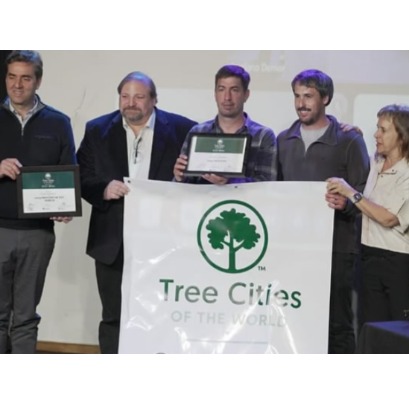
¿Dónde está el lugar más húmedo del mundo?
n muchos lugares la lluvia es una bendición, en otros tantos es causa de desastres, pero en una parte de Meghalaya es algo habitual
El pueblo de Mawsynram, en Meghalaya (India) recibe 467 pulgadas de lluvia por año, lo que lo convierte en el lugar más húmedo en la Tierra. Tanto es así que los obreros que trabajan al aire libre suelen llevar paraguas de cuerpo completo hechos de bambú y hojas de plátano.
Los demás habitantes están tan acostumbrados que una lluvia no es algo que los pueda detener. Las fuertes lluvias se debe a las corrientes de aire de verano moviéndose sobre las llanuras de Bangladesh, la recolección de la humedad avanzan hacia el norte, las nubes que se forman golpean las colinas escarpadas de Meghalaya donde se rompen.
Otra de las características más fascinantes y bellas de la región son los “puentes vivientes” de los valles empapados por la lluvia. Se trata de puentes naturales que los locales han ido formando durante siglos manipulando las raíces de los árboles de caucho. La gran ventaja es que de esta manera los puentes se auto-refuerzan naturalmente.
El esqueleto de estos puentes es de bambú, con zarcillos de los árboles de caucho, al parecer tienen que pasar de 6-8 años para que las raíces del árbol sean capaces de soportar el peso de una persona. Las cabras ya hasta tienen su lugar de resguardo en caso de mucha lluvia.

IT MAY INTEREST YOU
 Real and virtual commissioning: Hymmen leverages digital twins to improve project management efficiency.
Real and virtual commissioning: Hymmen leverages digital twins to improve project management efficiency.
Bielefeld, 1�/22/25 – The ideal scenario is one in which a production plant functions perfectly even before commissioning. However, a more detailed analysis of plant projects often reveals a different reality: unexpected challenges often arise during on-site commissioning that must be resolved with considerable deadlines. Hymmen demonstrates how digital twins can offer a solution. By simulating the production process in advance on a 1:1 scale and taking into account all relevant variables, this technology allows timely intervention at critical points.
 These are the “Druid oaks”, ancient trees from British forests that are associated with the pagan past.
These are the “Druid oaks”, ancient trees from British forests that are associated with the pagan past.
Discover the druid oaks, centuries-old trees with a deep link to the druidic tradition and its symbology
 Mercedes was distinguished as “Tree City of the World” by the FAO and international foundations
Mercedes was distinguished as “Tree City of the World” by the FAO and international foundations
Mercedes was officially declared Tree City of the World, a distinction granted by the Food and Agriculture Organization of the United Nations (FAO), the Arbor Day Foundation of the United States and the Reforestamos México foundation. This is an international program that recognizes cities that meet global standards in urban tree management and forest planning.





















